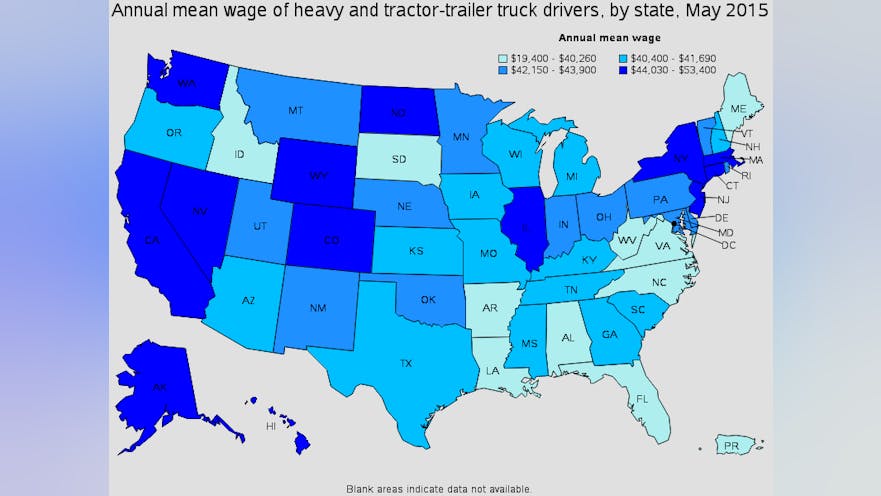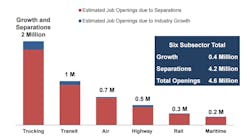Trucking industry discussion of drivers—whether at association meetings, in the media, or over coffee at a truck stop—tends to revolve around the big picture, whether that’s cyclical driver shortages, turnover rates, wage stagnation, or long-term demographic challenges. But there’s plenty of available data (“more granular,” in biz-speak) that can be used to frame the discussion in a way that is meaningful for any fleet or driver looking for applicable insights.
For starters, according to data compiled from the U.S. Census Bureau, driving a truck is the most common job in 29 of the 50 states. An interactive map and timeline created last year by National Public Radio’s Planet Money blog shows the growth in truck driving popularity starting in 1978 when it topped the jobs list in just nine states.
Then, just last week, the folks at the SpareFoot Blog (who write about self-storage and moving topics) did some research and came up with the “10 Best Cities for Truck Drivers.” To find the 10 metro areas with the most job listings for truck drivers, the blog teamed up with job site Indeed.com and then ranked those cities by:
- Job availability
- Average annual salary
- Median home price
- Median annual rent
Finally, they combined the rankings (giving double weight to job availability) to determine an overall ranking.
Atlanta tops the list, posting the highest share of jobs available for truckers as well as the highest paying jobs, with an average salary of $64,000. It also has the most affordable rents on the list. Charlotte comes in a strong second, performing especially well on pay ($55,000) and rental affordability. See the blog post for the complete tally.
The federal government’s Bureau of Labor Statistics is also deep into jobs data and is a key source for these other reports, with an Occupational Employment and Wages category devoted to Heavy and Tractor-Trailer Truck Drivers.
Among the numbers, BLS compiles driving jobs and wages by state, metropolitan region and area, both as totals and by “quotient,” or the ratio of the area concentration to the national average. The page feature interactive maps, which allow the user to point and a geographical location to see the corresponding data.
The 2015 report, the most recent available, is notable because many of the highest demand, highest paying areas are tied to oil and gas exploration and production—jobs that have since, generally, gone away.
Not surprisingly, the 10 metro areas with the highest concentration of truck driver jobs also happen to be home to some of the nation’s largest trucking companies (Slide 5). See the charts above for additional data from BLS, or go to the truck driver data page for the interactive versions.
For fleets looking to hire, or drivers looking to move up, the AmericanTrucker.com jobs page provides the latest listings.






